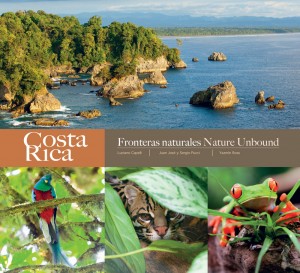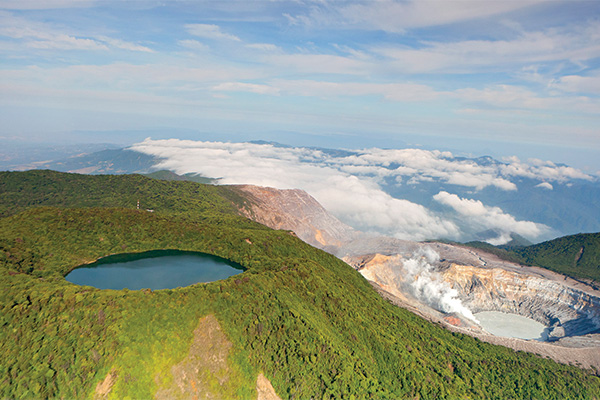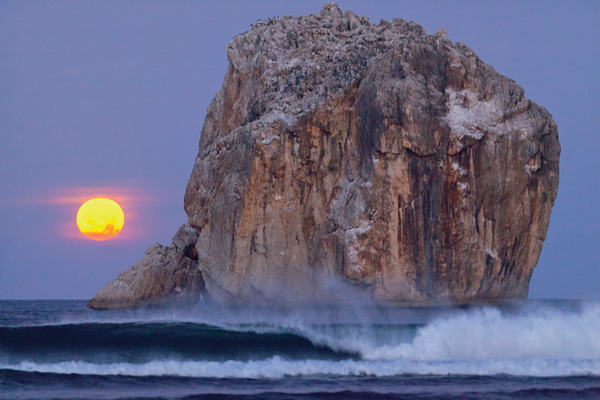Nature Unbound in Costa Rica
The good people at Ojala Publishing have your invitation waiting for you, in the form of their new book, “Fronteras Naturales”, or “Nature Unbound”, a collaborative project by photographers Luciano Capelli, Juan Jose & Sergio Pucci, with underwater images provided by Diego Mejias and Jose Manzilla. The open invitation comes from the book’s writer, Yazmin Ross, as a request for the reader to “empathize with the world and protect its fragile equilibrium”, as she puts it. The subject matter is the National Parks of Costa Rica, beginning with an introduction and brief history of the country’s parks and reserves, from their founding fifty years ago, to the current effort to keep these “ecosystems as unchanged as possible so that future generations may appreciate them without having to having to resort to photographs”. Yazmin has a way with words. And the project is a team contribution. Juan Jose Pucci, for example, is a Costa Rican physician who travels to different national parks on the weekends, photographing landscapes and wildlife that interest him. It is truly his passion. His brother Sergio is the author of two books: “Guanacaste” and “Costa Rica Pura Vida” as well as freelancing throughout the country.
Diego Mejias is also a filmmaker and Jose Manzilla is a dive instructor; both live in Playa del Coco. Mauricio Valverde is a retired pilot who manages Private Reserve and has a niche for photographing insects and fungi. Johana Murillo is an interesting person. An amateur birdwatcher, she is Costa Rican who travels her country photographing rare species. And Fabio Olmos is a Brazilian biologist who, while visiting Costa Rica, managed to capture pictures of the hard to locate Tody Motmot bird. Together, this group of photographers provided more than three hundred spectacular shots of landscapes, flora and fauna, rare birds and insects, reptilian and animal life.
The book is divided into seven chapters, beginning with the history (A Half Century of Conservation) and the DryForest (including Santa Rosa and Rincon de la Vieja) and ending with Isla del Coco. Yazmin told me that sectioning the middle part of the book was a difficult task but I think she and Luciano did a commendable job regionalizing the rest of the parks: The Wetland Routes (Palo Verde, Las Baulas, Ostional and Cabo Blanco); The Cloud Forest Route (Monteverde and Volcanoes Arenal and Tenorio); The Fumaroles Route (Volcanoes Turrialba & Guayabo and Poas and Braulio Carrillo); The Rainforest Route (Tortuguera and Cahuita) and The Scarlet Macaw Route (Carara, Manuel Antonio, Chirripo and Corcovado). There is a wonderful map in the beginning of the book outlying each of these zones but also revealing some gaps between, major concerns for conservationists, since it turns them to islands, or links in an incomplete chain. It is an unbroken chain that is essential to the preservation of species.
The photos are a compilation of stunning, breath-taking images from the air, the ground and in the water. The book also acknowledges the under-appreciated work of MarViva, for their years of documenting the marine life in Corcovado and Isla de Coco. The film crews used gyrocopters to become sky-bound but still close enough to Earth to capture intimate images, a precarious situation that demonstrates the dedication that drives this epic book. When the team members first heard of the latest major eruption in Turrialba, their immediate reaction was to go there immediately, to record and capture information and photographs, some that are in this new book.
The reader gets to twenty-two National Parks and Protected Areas, to witness their diversity. And the incredible photos along with Yazmin’s writing takes you there, to the time of day and season, the sights, sounds and smells, the traditions, local people and history and, most importantly, why they are all essential components in the future of ecology. It is really the first book to take on this depth and magnitude. The production is first class on this two hundred seventy-six page, hardbound edition, printed in Spanish and English, side by side. The observational verbiage: describing the volcano Poas as “a giant hummingbird’s nest, filled with water, is poetic. And the plethora of information is quite easy to ingest. It was interesting to read that in Palo Verde, for example, there is a high fire danger with the dried cattails there, similar to the problems in Guanacaste with the jaragua grass.
I enjoyed reading the references to David Janzen, the biologist who has concentrated on reforesting the Santa Rosa area in Guanacaste, studying the “genetic code bank” there, as chronicled in the book “Green Phoenix”. Janzen realized that if he spent his career studying insects, in thirty years there would be no forest for them to survive in. Instead he changed his concentration to the preservation and even reforestation of the area.
“We are not the experts,” Yazmin informed me, “we are students, listening and learning. And then trying to pass it on.” She remarked to me about the advantage, the insight of recruiting and employing citizens from villas nearby the parks, and teaching them how to transition “from farmers to conservationists”. In the chapter about Braulio Carrillo, Alvaro Ugalde explains that the area was pieced together by purchasing small plots of jungle between the Hondura and Sarapiqui’ rivers “as the first biological corridor we created for birds, tapirs, coyotes and jaguars to pass through.” He further noted that, “Forty years ago, people were not in the least interested in coyotes, jaguars and snakes”. And this is precisely the change that has occurred: conservation and ecology has now progressed from awareness to positive actions.
This benevolent crusade on the part of Ross and Capelli did not begin with this book, but with their first, independent collaboration, “Passion for the Caribbean” in 2003. It continued with Papaya Music, through albums like “Simbiosis” with pianist Manuel Obregon performing in the Monteverde Preserve, and via Yazmin’s project Pachanga Kids, producing bilingual books for young readers, with some of the books having ecological themes. And Luciano has filmed and produced a second “Simbiosis” DVD, as well as “Se Quema el Cielo”, a documentary about the fire dangers in Guanacaste, an area dear to the collective heart of Luciano Capelli and Yazmin Ross. Their book “Guanacaste: Rutas de Viajes” has become very popular with the public. Yazmin told me that they consider this new book “the sibling” of the Guanacaste book, the next chapter of their passion for the natural wonders of this country.









